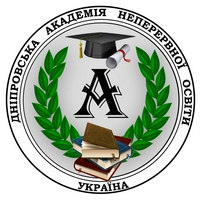BULLYING: PROBLEM SOLVING ALGORITHM
Abstract
The article presents the algorithm of actions of pedagogical staff of a general secondary education institution in case of detection of signs or facts of bullying (harassment), namely: notification of bullying (harassment),
investigation of the facts of bullying (harassment) by the head of the educational institution, establishment of a commission to consider cases of bullying (harassment) ). Subjects of response and responsibility of persons for committing bullying (harassment) are also considered. The focus is on preventive measures regarding bullying. The main ones are measures of educational influence. It was determined that the main role in solving these issues belongs to the head of the institution, who takes and ensures the necessary measures to provide social, psychological and pedagogical services to students. A practical psychologist and a social pedagogue, within the scope of their job duties, constantly work and diagnose the state of the psychological climate in the team, in which the bullying (harassment) took place; develop a plan for corrective work with the offender and witnesses, parents or their legal representatives; implement an individual rehabilitation program for the victim; develop a plan of preventive measures for the group of observers. And most importantly, they provide support for pedagogical workers who conduct the educational process in a class group where a case of bullying (harassment) has been recorded, providing psychological support for students of education. It has been established that the subjects of response in case of detection of a case of bullying in educational institutions are: the service of the educational ombudsman; services for children; social service centers for family, children and youth; local governments; managers and other employees of educational institutions; founder(s) of educational institutions or a body authorized by him/her; territorial bodies (units) of the National Police of Ukraine. It should be emphasized that the list of measures of educational influence is determined and planned by th bullying, which is created in the institution of general secondary education. It was found that the head of the institution should take and ensure the necessary measures to provide social, psychological and pedagogical services to the students of education. A significant role in this line of work is given to practical psychologists and social pedagogues. A practical psychologist and a social pedagogue, within the scope of their duties, diagnose the state of the psychological climate in the team in which the bullying took place; develop a plan for corrective work with the offender and witnesses, parents or their legal representatives; implement an individual rehabilitation program for the victim; develop a plan of preventive measures for the group of observers.
e commission for consideration of cases of
References
2. Губко А. Шкільний булінг як соціально-психологічний феномен. Вісник Чернігівського національного педагогічного університету. Серія: Психологічні науки. 2013. Вип. 114. С. 46–50.
3. Деякі питання регулювання на випадки булінгу (цькування) та застосування заходів виховного впливу в закладах освіти: Наказ МОН України від 28.12.2019 № 1646. URL: https://zakon.rada.gov.ua (дата звернення: 20.07.2022).
4. Конвенція ООН про права людини – Законодавство України. URL: https://zakon.rada.gov.ua (дата звернення: 21.07.2022).
5. Кримінальний кодекс України: Закон України від 05 квітня 2001 року № 2341-ⅠⅠⅠ Ст. 126.1. Домашнє насильство. URL:https://kodeksy.com.ua (дата звернення: 25.07.2022).
6. Лушпай Л. Булінг як соціально-педагогічна проблема та шляхи її вирішення. Київ, 2010. С 126–131.
7. Ожийова О. Булінг. Шкільний булінг: поняття та основні форми / Ожийова О. М. Вчені записи Харківського гуманітарного університету «Народна українська академія» / Редкол.: В. І. Астахова (головн. ред та ін.) Харків: НУД, 2009, С.158–163.
8. Про внесення змін до деяких законодавчих актів України щодо протидії булінгу (цькуванню): Закон України від 18 грудня 2018 року № 2657-VIII. URL: https://zakon.rada.gov.ua (дата звернення: 22.07.2022).
9. Протидія булінгу. URL: http: //multycourse.com.ua (дата звернення: 18.07.2022).
10. Токарева Н. Сучасний підліток у системі психолого-педагогічного супроводу: монографія / Н. М. Токарева, А. В. Шамне, Н. М. Макаренко. Кривий Ріг: ТовВНП «Інтерсервіс», 2014. 312 с.

 ISSN
ISSN  ISSN
ISSN 

